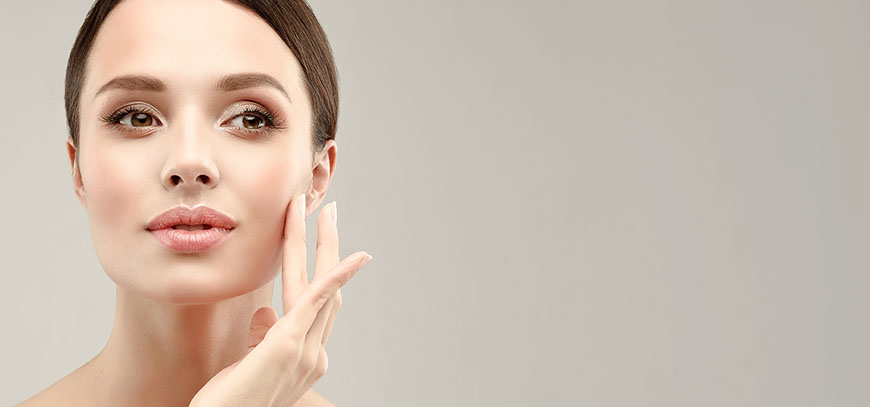Working Time
- Mon-Sat 10:00 – 19:00
Contact Info
-
+90 542 512 51 64
Ask the Experts
Face Fat Transfer

If you have considered undergoing a facial rejuvenation procedure or Facial Fat Grafting but don’t think you’re ready for a face lift or other form of facial plastic surgery, you may wish to think about facial fat injections. This injection method of facial fat sculpting, also called microlipoinjection, can restore attractive contours to your cheeks, chin, and under-eye area, and add volume to your lips.
Fat Transfer, Fat Injections, Autologous Fat Transfer, and Facial Fat Grafting all refer to the process of taking fat from an unwanted area (or areas) of your body and re-injecting purified adipose fat tissues into another area (or areas) of your body. The goal of any fat transfer procedure is to add fullness to the area which receives the fat grafts. Fat injections are commonly made to the face, lips, buttocks or hands. With the Facial Fat Grafting on face, fat can be transferred to the cheeks, nasolabial folds, jawline, and the lower eye area.
What exactly is Face Fat Transfer?
Ageing skin has a tendency to lose volume through the face, particularly beneath the eyes and in the cheeks, which can make the whole face look gaunt and hollow. There are many aesthetic solutions to restore some of this volume, and one of the options that most appeals to prospective patients is taking fat from elsewhere on the body and inserting it into the face to create a more youthful appearance.
The most problematic aspect of fat transfer surgery has always been ensuring that the fat cells survive. Just injecting the cells with a needle leads to a very low fat cell survival rate. But via careful harvesting of the fat cells, cleaning them before transplanting and using an advanced method of injecting, significant fat cell survival rates can be achieved – as high as 50%.
Fat transfer to the face is effective in replacing lost fat, and very good at filling out deep facial folds and wrinkles. Additionally, it can be useful for reshaping areas of the face in order to improve or restore facial balance. The more mobile areas of the face, like the upper lip and the lips themselves, respond poorly to fat transfer, because immediately postoperatively, fat cells have to attach themselves to the surrounding tissues in order to establish a healthy bloody supply. In mobile areas like around the mouth, fat cell survival can be as low as 20%. This is the exception to the rule, though, and in most areas of the face it is possible to achieve a 50% take – meaning that half the fat injected into the treatment area will survive permanently.
The Procedure
- The fat cells that will be used for grafting are removed by a traditional liposuction technique. Most commonly, these are taken from either the lower abdominal wall via a small incision in the umbilicus or from the inner thigh area. The amount of fat taken for the transfer will vary from patient to patient, and will typically have very little impact on the area it is taken from. From time to time, there might be a slight lumpiness in the skin after the fat has been taken.
- Following this, the fat is processed and cleaned before it is ready to be transplanted into the face. It is administered into the face with specialist needles that are blunter than normal surgical needles, inserted through several small punctures in the face.
- Multiple, layered channels are made into the site of treatment so that fat cells can be deposited under the skin strategically to achieve the desired effect. Due to the fact that only half the grafted fat is likely to survive, an excess will be placed into the skin during the procedure, in anticipation of absorption. In the first 6-8 weeks after surgery, the majority of the fat will settle, and by the 2-3 month mark there will be further change still.
Fat transfer can either be provided as a surgical procedure in its own right, or it can be used for facial reconstruction. In facial rejuvenation and anti-ageing, it is often used in combination with other treatments like facelifting in order to enhance the final results.
Often two treatments are advised to get the best results.
During your online consultation, we’ll discuss the liposuction areas as well as fat injection areas to determine the best surgical plan to achieve your goals. Be sure to listen to all of the pre-operative instructions and get answers to any concerns you may have.
You should stop smoking 4 weeks prior to the surgery for the best results. Smoking does adversely affect the way you heal!
You will likely have some discomfort as well as some swelling during the immediate post op period. For a fat graft to be as successful as possible you’ll need to avoid stressing the fat injection area(s) for three weeks. It takes up to 4 days for the blood vessels to grow ito the fat grafts and another 2 or 3 days for the blood vessels to strengthen. It takes 2 to 3 weeks for the extracellular matrix surrounding the fat graft to reach enough strength to withstand minor stresses.
Post operative instructions for facial fat grafting include the following:
- Wear surgical tape on facial areas for 5 days;
- Sleep on your back with your head elevated for the first week;
- No rubbing of the face for 2 weeks (only soft washing);
- Return to work after 1 week;
- Exercise as tolerated after 2 weeks.
As with any cosmetic surgery procedure there are risks and complications associated with fat transfers. Possible concerns include:
- Swelling
- Irregular contours or uneven results from liposuction
- Hematoma
- Seroma
- Skin necrosis
- Fat necrosis
- Less than expected results
- Asymmetry
